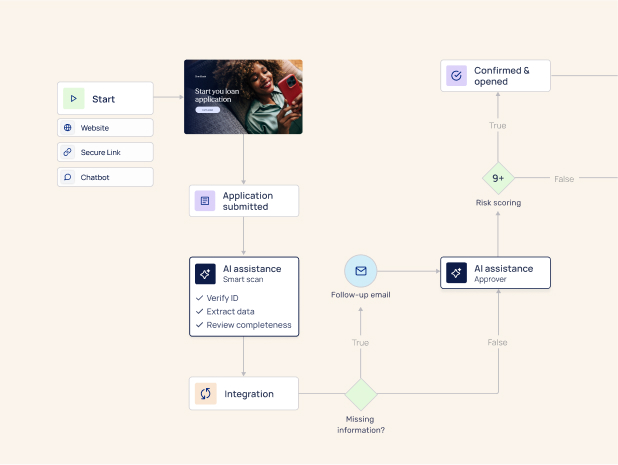Global insurance coverage is staggeringly unequal, with huge disparities between countries and between populations within the same country. For instance, in the US, insurance penetration in 2022 was quite high at 12% (the ratio of total insurance premiums to gross domestic product that year). Yet in Egypt and Nigeria—both countries with massive populations—it was less than 1%. Also in 2022, 21% of the Hispanic population in the United States did not have health insurance at all, compared to only 6.5% of white Americans and 10.4% of Black Americans.
These disparities are a cause for concern, but they also point to enormous opportunities for growth—if insurance providers can meet the unique needs of underserved populations and developing economies, that is. There are numerous real-world examples of how insurance penetration can change with the right strategies. For example, in the field of life insurance, emerging markets in Asia were historically small contributors. Today, they account for more than half of global premium growth in the life insurance market and have become global growth drivers. With the right penetration methods, insurers can overcome barriers and unleash similar potential in other insurance verticals and in additional geographic areas.
Barriers to insurance access
Easier said than done—a combination of social, economic, and systemic barriers make it difficult for many underserved populations to access insurance services. Some of the key barriers include:
Costs
Individuals and families with limited financial resources can barely afford necessities like food and housing—they simply don’t have anything to spare for insurance premiums. In addition, people working in low-wage jobs or informal sectors often don’t have stable employment. Without a steady income, they have difficulty paying even the lowest insurance premiums.
Awareness and access to information
Underserved communities often find it hard to access and understand insurance-related information and navigate the system effectively, due to reasons such as language barriers, low literacy levels, limited internet access, lack of access to distribution channels, and low levels of education. In addition, insurance policies are notoriously complex and difficult to understand, which can deter underserved populations from engaging with insurance providers. Last but not least, in rural or low-income areas the physical distance to insurance offices or the absence of local agents can also hinder access to insurance services.
Cultural and social factors
Many underserved populations don’t understand the importance of having insurance coverage, and certain cultural beliefs can discourage some underserved populations from seeking insurance services. For example, some groups may have experienced discrimination, bias, or perceived unfair pricing from insurance providers, leading to distrust of insurance companies.
Documentation requirements
Undocumented immigrants and other groups often lack the necessary documentation to apply for insurance coverage. For example, they may not have an official ID, pay slips, a documented credit history, tax returns, or proof of residence.
Limited product offerings
Traditional policies don’t always meet the needs of underserved populations. For example, an extended family, including young drivers and more experienced ones, may share a single vehicle for local travel. If the premium costs are based on the youngest, least experienced driver, the premium costs may be quite high. However, if they are offered a personalized policy for local use and are charged per actual usage, only paying the higher rate when the younger driver is actually behind the wheel, the policy is more likely to fit their budget.
The impact of limited insurance access
Limited insurance coverage can have significant social and economic impacts on vulnerable individuals and communities, exacerbating existing inequalities and damaging overall well-being.
For example, without adequate insurance coverage, vulnerable individuals and communities often face substantial financial burdens when dealing with unexpected expenses related to a medical condition or damage to their homes or property. This can lead to increased debt or force them to divert funds from other essential needs including housing, education, or food.
People who don’t have sufficient health insurance coverage may not be able to access critical medical treatment and preventive care like vaccinations, screenings, and wellness check-ups. Without early detection and treatment of health conditions, they often have poorer health outcomes overall. In addition, they may lack access to mental health support and treatment options, leading to untreated mental health conditions that can further impact overall well-being. The health issues resulting from limited insurance coverage can impact educational outcomes for vulnerable individuals as well, leading to higher absenteeism and lower academic performance.
Inadequate insurance coverage may deter individuals from pursuing entrepreneurial ventures or changing jobs due to concerns about losing insurance benefits, limiting their economic mobility and career opportunities. This damage can even extend to future generations, as children growing up in vulnerable households may face similar challenges and perpetuate the cycle of limited access to insurance services.

The power of digital data intake
Digital data intake can play a major role in overcoming these barriers and enhancing inclusion in insurance. Digital data can be used in almost every aspect of the insurance industry, from customer onboarding, upsell, risk assessment, underwriting, and claims processing, with the following benefits:
Reduced friction
With digital data intake, customers can provide necessary information online, leading to quicker responses and less hassle during the application process. Instead of overwhelming consumers with long, complicated paper or PDF forms, digital data intake journeys use interactive forms with short steps and clear, user-friendly instructions to gather customer data. For customers with language, educational, or cultural barriers, that alone can make a big difference.
But that’s not all. Digital intake processes are adaptable, utilizing features like auto-fill and dynamically adjusting to customer input. The customer doesn’t have to fill in the same fields repeatedly and only sees the questions and fields relevant to their specific request or situation. This significantly reduces customer frustration and boosts the form completion rate, especially for underserved populations.
Real-time data from multiple sources
Traditional underwriting processes often rely on static information from limited sources which may or may not be relevant at the time of the risk assessment. Digital data intake, on the other hand, gives insurers access to a vast array of non-traditional real-time sources including data from IoT devices, wearables, and open-source databases. These varied data sources add valuable insights to the underwriting process and provide a more nuanced understanding of risk, even for customers who don’t have traditional documentation or a credit score.
The data from static sources only give underwriters a picture of a specific point in time. However, with digital data from various sources, insurers can continuously monitor policyholders' behavior and risk factors as they change over time. This real-time monitoring enables timely adjustments to coverage and pricing, ensuring that policies remain relevant and adequate throughout the coverage period. When assessing risk for underserved populations whose circumstances often change frequently, immediacy is critical to accurate risk analysis.
Advanced analytics
Automated systems can analyze digital data quickly, enabling insurers to provide policy quotes and approvals much faster than traditional methods. Digital data analytics can provide valuable insights into market trends, customer behavior, and risk patterns. Insurers can leverage this information to make informed business decisions, refine their underwriting strategies, and identify new growth opportunities, including in underserved markets.
Digital data also allows insurers to tailor policies to individual customers' needs and risk profiles. This personalization can lead to more relevant coverage options for a variety of needs, better customer satisfaction, and increased penetration and retention rates.
Fraud reduction and improved efficiency
Digital data analytics can help identify potential fraud patterns by detecting inconsistencies in customer information and claim details. This capability helps reduce fraudulent claims, saving costs for both insurers and honest policyholders. Documents can be verified in real time, and cross-checked with external sources and databases, reducing the risk of covering underserved groups.
By streamlining underwriting processes, insurers also can significantly reduce paperwork and administrative overheads. Digital data intake and automated analysis minimize manual tasks, freeing up resources for other critical aspects of the insurance business.
Advantages of digital data intake for underserved populations
Digital data intake has specific benefits for underserved populations. With digital data intake, underserved communities can access insurance from an app and manage their insurance needs on the go, even if they live in a remote location. Furthermore, as explained above, the user-friendly, easy-to-use interface makes onboarding processes more accessible to a variety of customers.
But that’s not all. Personalized pricing, flexible insurance coverage, and microinsurance solutions address the financial challenges many underserved populations face in accessing insurance services. Personalized pricing takes into account individual risk profiles, ensuring fair premiums tailored to each person's specific circumstances and making insurance more affordable and accessible for a variety of populations.
Flexible insurance coverage allows for customization, permitting policyholders to choose only the coverage they need, avoiding unnecessary costs, and increasing affordability. Microinsurance solutions, with their lower premiums and simplified terms, cater to the financial limitations of low-income customers, providing them with protection against unforeseen events without straining their budgets. Together, these approaches empower underserved populations with appropriate and affordable insurance options, fostering financial inclusion and resilience within their communities.
It’s time for a more inclusive insurance ecosystem
By embracing digital transformation, insurers can stay ahead of the curve and leverage the potential and opportunities of untapped markets and underserved communities. Yet it isn’t easy to overcome the various barriers detailed above. In order to do so, insurers, regulators, and technology providers must work together to conduct public awareness campaigns and targeted outreach programs, help potential customers access financial assistance, and build trust between underserved communities and insurance providers. Doing so can help underserved populations achieve more equitable access to insurance services and financial inclusion.





